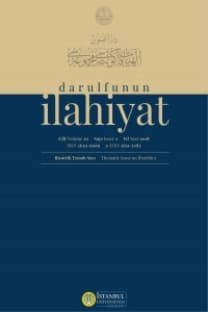Book Review: Muhammad ibn Muhammad al-‘Imād al-Kātib al-Asfahānī. Nusrat al-fatrah wa ‘usrat al-fitrah. ed. Issam Mustafa Okleh. 2 vols. London: Al-Furqān Islamic Heritage Foundation, Centre for the Study of Islamic Manuscripts, 2019. ISBN: 978-1-78814-533-6, 443, 598 pp.
‘Imād al-Dīn al-Isfahānī belonged to a distinguished family of the 6th/12th centuries, members of which held high positions in the Seljuk government such as clerks and viziers. After his primary education in al-Ray and al-Kāshān, ‘Imād al-Dīn went to Baghdād and studied under several scholars at al-Nizāmiyah (534/1139). After his education at al-Nizāmiyah, he came back to al-Isfahān in 543 (1119) and then six years later returned to Baghdād. After his second arrival in the ‘Abbāsīd capital, ‘Imād al-Dīn was appointed as a nāib by Vizier Ibn al-Hubayra in Wāsit. After the suspicious death of Ibn al-Hubayra (559/1164), he remained in custody for a time, and later went to Damascus and served as a kātib and mushrif of Dīvān al-Inshā in the Zangī and Ayyūbīd administrations. But after the death of Salah al-Dīn, ‘Imād al-Dīn fell out of favor with the authorities and went to live in Egypt for approximately a year. Finally, he returned to Damascus and died there on 1 Ramadan 597 hijrī (5 June 1201).
Anahtar Kelimeler:
Seljuks, Abbâsids, ‘Imād al-Dīn al-Isfahānī, Nusrat al-fatrah
Book Review: Muhammad ibn Muhammad al-‘Imād al-Kātib al-Asfahānī. Nusrat al-fatrah wa ‘usrat al-fitrah. ed. Issam Mustafa Okleh. 2 vols. London: Al-Furqān Islamic Heritage Foundation, Centre for the Study of Islamic Manuscripts, 2019. ISBN: 978-1-78814-533-6, 443, 598 pp.
‘Imād al-Dīn al-Isfahānī belonged to a distinguished family of the 6th/12th centuries, members of which held high positions in the Seljuk government such as clerk and vizier. After his primary education in al-Ray and al-Kāshān, ‘Imād al-Dīn went to Baghdād and studied under several scholars at al-Nizāmiyah in Baghdād (534/1139). After his education at al-Nizāmiyah, he came back to al-Isfahān in 543 (1119) and then six years later returned to Baghdād. After his second arrival in the ‘Abbāsīd capital, ‘Imād al-Dīn was appointed as a nāib of vizier by Ibn al-Hubayra in Wāsit. After the suspicious death of Ibn al-Hubayra (559/1164), he remained in custody for a time, and later went to Damascus and served as a kātib and mushrif of Dīvān al-Inshā in the Zangī and Ayyūbīd administrations. But after the death of Salah al-Dīn, ‘Imād al-Dīn fell out of favor with the authorities and went to live in Egypt for approximately a year. Finally, he returned to Damascus and died there on 1 Ramadan 597 (5 June 1201). This study aims to introduce and evaluate the new publication of Nusrat al-fatrah wa ‘usrat al-fitrah, which has been in writing so far, by ‘Imād al-Dīn al-Isfahānī, who was one of the leading historians and scholars of his period.
Keywords:
‘Imād al-Dīn al-Isfahānī, Nusrat al-fatrah, Baghdād,
___
- Barthold, Wilhelm. Turkestan Down to the Mongol Invasion. London: Luzac, 1928.
- Hadjdjī Khalīfa, Kashf al-zunūn ed. M. Şerefettin Yaltkaya & Kilisli Rifat Bilge. 2 vols. İstanbul: Maarif Matbaası, 1941-1943.
- Ikbāl, ‘Abbās. Vizārat dar ‘ahdi salātīn buzurgī Selcūkī. Tahrān: Danishgāh-ı Tahrān, 1338.
- al-Isfahānī, 'Imād al-Dīn., Dīvān ‘Imād al-Dīn al-Isfahānī, ed. Nāzem Rashid. Mosul: Matābi‘ al-Jāmi‘at al-Mosul, 1983.
- Lambton, A.K.S., “Anūshirwān b. Khālid” The Encyclopedia of Islam New Edition (EI2), 2/522-523.
- Nafīsī, Sa‘īd. Tārīh-i nazm u nasr der Īrān u der zabān-i Fārisī, 2 vols. Tahrān: Intishārāt Furūgī, 1363.
- al-Sāhibī, Hindushāh, Tajārib al-Salaf, ed. ‘Abbās Ikbāl. Tahrān: Kitābkhāne-i Tahūrī, 1357.
- Yayın Aralığı: Yılda 2 Sayı
- Başlangıç: 1925
- Yayıncı: İstanbul Üniversitesi İlahiyat Fakültesi
Sayıdaki Diğer Makaleler
İslam Felsefesinde İbadetler Ekseninde Dindarlık
İslam’ın Yerelleşmesi ve Küreselleşmesi: Çin İslamı Örneği
II. Hadis Lisansüstü Öğrenci Sempozyumu 19 Kasım 2020
Senkretik Bir Hareket Olarak Mesihi Yahudilik
Mutluluk Kavramının Felsefi, Psikolojik ve Dini Açıdan İncelenmesi
